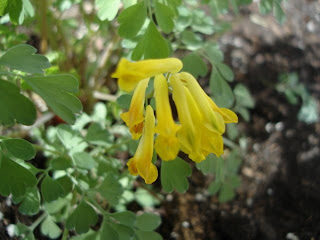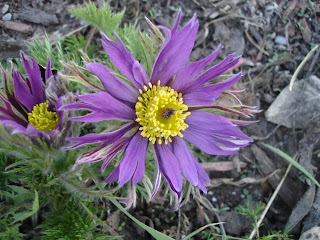



I have been lucky enough over the past few days to acquire a number of plants that I've been eyeing for the past few years. I will be showing them off over the next few days.
Corydalis lutea (top) is the seldom-offered yellow corydalis species (the most common corydalis species are blue-flowered, and the popular C. solida is pink to red-flowered). It is quite different from more familiar corydalis varieties, with smoother-cut foliage resembling columbine leaves.
Sanguinaria canadensis f. multiplex (second) is the rare double form of the beautiful native woodland plant, bloodroot (S. canadensis), so named for the red-colored liquid contained within the roots. I find it rather resembles water lilies, and the foliage makes the plant attractive even when not in bloom. They bloom early in the spring.
Pulsatilla 'Papageno' (third) is actually not a new plant; it is in its second year now in my garden. A delightful Pasqueflower variety, it is the first plant to bloom in my garden this year.
The last photo depicts my favorite iris: Iris germanica 'Chivalry', which I have been eyeing at local greenhouses for a few years and I finally bought it last week. It has the most gorgeous shade of blue, and it produces up to 8 flowers per stem. The flowers are also very large and have a wonderful fragrance.













